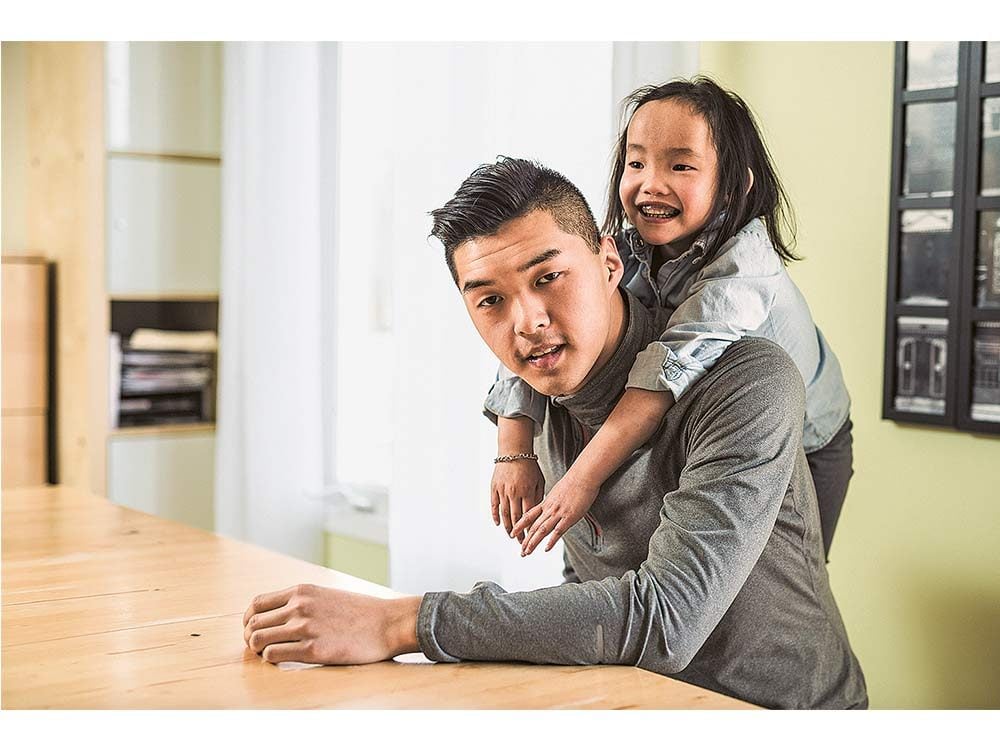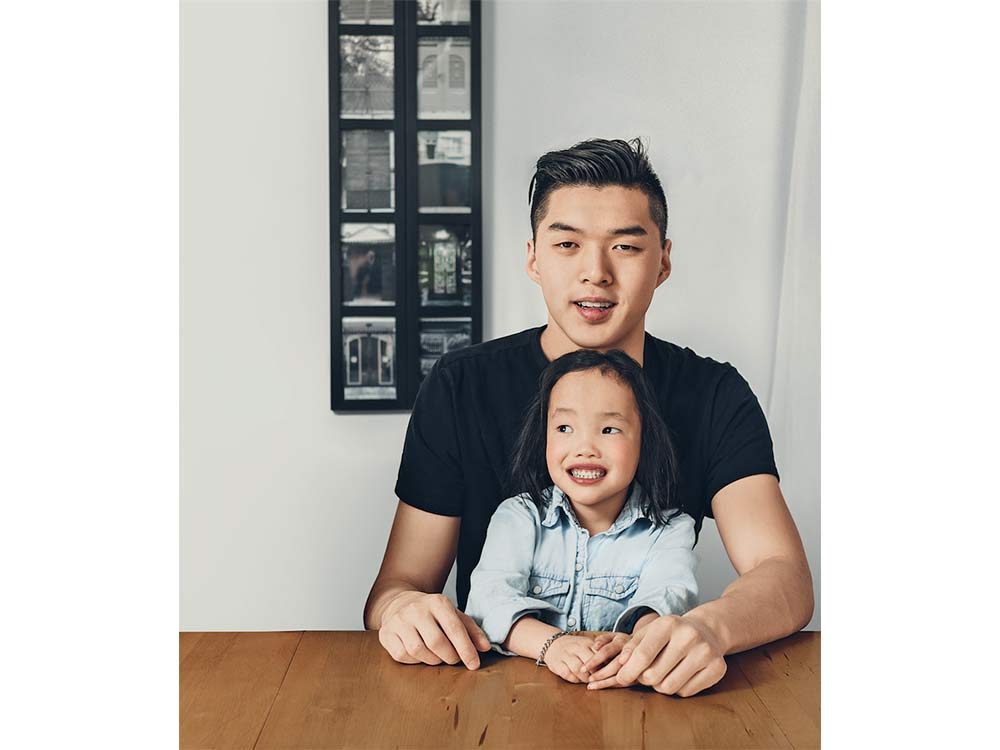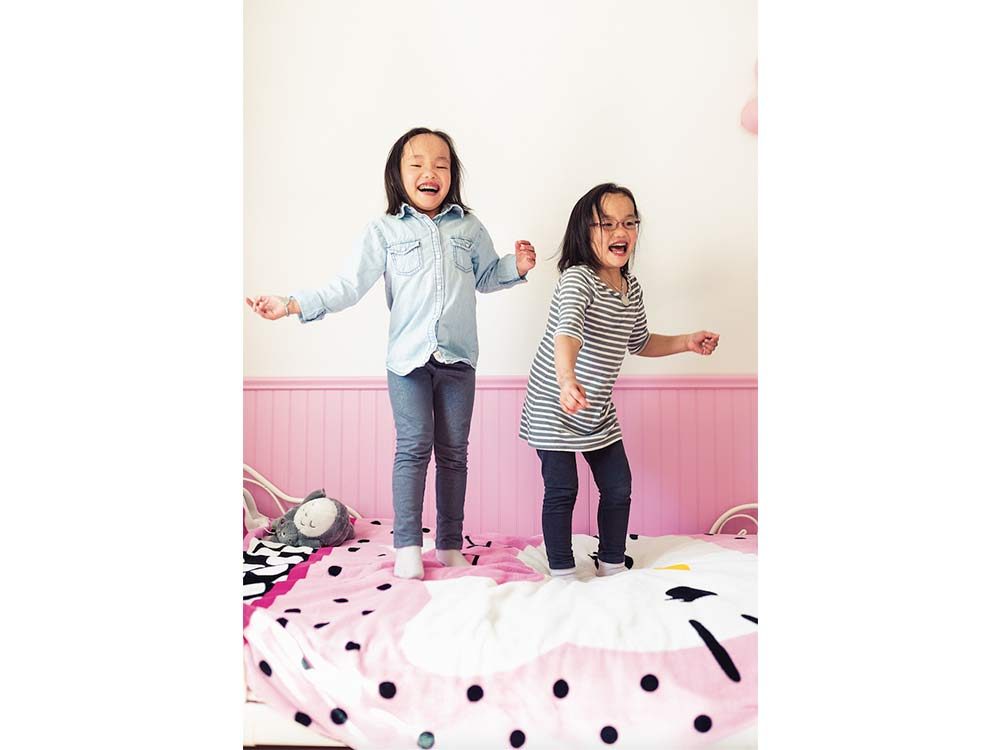
A Gift of Hope
From the moment Johanne and Michael Wagner met their daughters in November 2012, they feared the girls would die. At 18 months and barely four kilograms each, the Vietnamese twins they’d adopted were clearly very sick. After holding them, Johanne and Michael wandered the streets of Ho Chi Minh City, devastated. They bought matching red and black jars: one to hold Binh’s ashes and one to hold Phuoc’s. They wanted to show their new daughters love, but worried there wasn’t much time.
Soon after the Wagners returned home to Kingston, Ont., with the twins, genetic testing confirmed that both girls had Alagille syndrome, a rare genetic disorder that causes bile to build up in the liver, severely reducing the organ’s ability to eliminate waste from the bloodstream. By December 2014, Binh and Phuoc desperately needed liver transplants.
While Johanne and Michael were waiting to discover if either or both of them would be a match, they launched a Facebook campaign to search for donors. In January, Michael, a major with the Canadian Armed Forces, learned he could donate—but only to one child. (While part of the liver is donated and will grow back, a person can safely undergo the procedure only once.) Doctors decided Michael’s liver would go to Phuoc, who needed it more urgently.
After the Wagners posted the bittersweet news on their Facebook page, the campaign went viral. Though the couple insisted they weren’t forced to choose between daughters, relying instead on their doctors’ advice, their situation struck many as a medical Sophie’s Choice. Hundreds of potential donors filled out applications. In February 2015, Michael donated to Phuoc, and in April the Toronto General Hospital chose an anonymous donor for Binh.
At a press conference that month, Johanne and Michael tearfully thanked Binh’s donor, whose identity, they believed, would stay a secret. That is, until about a month later, when a stranger posted the donor’s name on the Wagners’ Facebook campaign page for no apparent reason.
Johanne deleted the comment, but the way the name was spelled stuck with her: K-R-I-S—not Chris. Kris Chung. Overcome by curiosity, she searched his name on Facebook. That’s how she learned that the donor was a 19-year-old English literature student at the Royal Military College of Canada, a five-minute drive from her home. Determined not to breach Chung’s privacy, Johanne changed her routine, and avoided the downtown core, worried about an accidental run-in. But she anguished over the secret. This young man shares more with my daughter than I do, she thought. So why isn’t he here?
The Wagners were allowed to send a thank-you note to the donor. During her daily runs that summer, Johanne would fret over what to write; she often broke down in tears. In the end, she decided her gratitude couldn’t be captured in words. Thank you is too easy to say, she thought. We say it all the time. Thanks for the coffee. Thanks for the bill. Thanks. Thanks. Thanks. In the end, she wrote in her note that she’d make sure Binh treasured his gift. She sent the card in September. Typically, donors send an anonymous reply, but Johanne was met with silence.
With five biological kids and four adopted ones, family is the centre of Johanne’s orbit. But by October, still not having heard from the donor, she couldn’t shake the feeling that hers was incomplete. Michael supported her but took a more practical stance. If the donor wanted to stay unnamed, they couldn’t do much. Then, in February 2016, Johanne received a card—though, to her dismay, the donor didn’t divulge his identity.
For his part, Chung says that he waited to reply because he knew that if he never met Binh, then what he wrote in his note would have to last a lifetime. His card thanked Johanne and Michael for what they’d done for the twins and assured Binh he’d never regret the transplant. He added that he hoped she had a fulfilling life, marked by her own desire to give back.
Chung, now 21, had filled out the donor form online moments after reading about the Wagners’ story in the news. He felt moved by their selflessness and was struck with the thought that he, by comparison, hadn’t done much to contribute to his community. He wanted to change that—and seeing Michael in his uniform cinched it. Humble and spotlight-averse, Chung barely told anyone his plan pre-surgery—not his parents, friends or professors. He was disappointed when he learned he was the second choice—until the chosen donor cancelled the night before the surgery. Chung got the call and instantly said yes.
During the months that followed the surgeries, Chung would see posts from the Wagners’ campaign page in his Facebook feed. Johanne used them to share her thoughts on creating a legacy for her daughters through charitable work. Why not use the attention to do good in Vietnam? (In January 2016, she also started working as the Vietnam and U.S. adoption program co-ordinator for TDH Ontario.) Chung, who “liked” the posts on Binh’s health, was also drawn to the idea that he could keep making a difference. He’d caught the goodwill bug.

Shortly after he sent the card, Chung responded to a post on the Wagners’ page. It was innocuous enough. Johanne, who was planning a trip to Vietnam, asked followers if she should go through Hong Kong or Taipei. Chung chimed in, suggesting Hong Kong. He and Johanne chatted about the trip, later exchanging phone numbers. Johanne had no idea if Chung was aware that she knew he was the donor; Chung says it’s hard to say when he suspected Johanne had figured it out. Finally, on Easter weekend, roughly a year after his surgery, the young man sent a text asking if Johanne and Michael wanted to meet. They said yes.
The trio met at Starbucks that Monday and talked for three hours. Johanne says that as soon as she hugged Chung, she found her family’s missing piece. Chung remembers being happily surprised that Johanne and Michael accepted him on sight; there was no racial barrier to navigate. The men swapped stories about their operations; Chung heard updates about the twins. When the couple left, Chung told them he was staying to do some reading. But instead he just sat there, absorbing. He’d waited to reach out because he was recovering, he says, but he also wanted to be sure the Wagners weren’t just interested in one meeting; he wanted to be part of the twins’ lives—and their legacy—too.
A week and a half later, he met six of the Wagner kids, including Binh and Phuoc. “It was unbelievable,” says Chung, “to see her and think that a little bit of me is with her right now.” Within minutes, Binh was pointing at his hair, excited that it was dark like hers. At the end, she wrapped her spindly arms around him. A few weeks later, he came over for the afternoon and wound up staying for dinner. An instinctively solitary guy, Chung was hesitant about Johanne’s offer to spend time with the whole family. He wasn’t sure he was ready for what he imagined would be the chaotic energy of the household. That night, he and Johanne chatted until 4 a.m. For months, she’d desperately wanted him to be part of the family. Now, almost instantly, he was.
“Kris! Kris! My Kris!” It’s early March, less than a year after their first meeting. Five-year-old Binh pistons down the hallway, past the Wagners’ meticulously labelled coat hooks, and latches onto Chung’s leg. This happens before he can close the door, or even quite say hello. Later, at the family’s giant dinner table, his body becomes a jungle gym for both twins.
As the duo climbs, Johanne reminds the twins of Phuoc’s new stitches, which stretch across her tiny torso. Last week, Phuoc was at SickKids in Toronto to remove a hernia that developed after the transplant. Even with bumps like these, the girls are vibrant. Their feeding tubes are gone; their skin is cleared of Alagille’s telltale rashes and jaundice; and they’re in school—a milestone the family wasn’t sure the two would reach.
Binh likes to smile and say, “Kris liver me.” It’s become a verb now, an expression of love and gratitude. He liver me. I liver you. “This warms my heart—when I see those three together,” Johanne says. “He didn’t only help Binh. He helped Phuoc, as well. They’re inseparable.”
He’s also become a sibling to the other Wagner kids. A week before, Chung cut seven-year-old Toan’s hair just like his: shaved on the sides, slicked back on top. When Fiona, the Wagners’ second-oldest child, felt lonely at camp last summer, she called Chung—she knew her big brother would understand. He and Johanne put together a care package, including a ukulele and some snacks.
It’s not just Chung who’s become an honorary relative. His eldest brother and mother, who live in Vancouver, and his father, who lives in Hong Kong part-time, have all met the Wagners. While Chung’s mother doesn’t speak fluent English and none of the Wagners speak Cantonese, they’ve managed to make it work. Last June, while on a business trip, Johanne visited Chung’s mother and brother in Vancouver. They met again in August, when Chung’s mom and dad visited Kingston, commandeering the Wagners’ kitchen to cook dinner. When the moms are apart, they text using a mix of English, photos and emoji.
Sunday night dinner is now a shared tradition for Chung and the Wagners. This evening, Michael serves plates heaped with rice, potstickers and steamed buns. Chung is beside Binh, who demanded, gesturing with her neon Hello Kitty chopsticks, that he sit next to her. Conversation drifts from the best Vietnamese food (the younger children discovered they liked squid after Michael told them it was “underwater chicken”) to what the teenagers are learning in school. When the meal is over, dishes are delegated to the oldest kids, and Johanne and Chung duck out to the Wagners’ finished garage, which has become the hub for their new non-profit organization, Twins for Hope, dedicated to helping children in Vietnam.
Inside, neatly organized on shelves, are bins filled with Twins for Hope merchandise: decorative paper fishes, incense and hand-crafted pop-up cards, all made in Vietnam. At one point, the pyjama-clad twins bound in and take turns leaping up beside Chung. As they giggle, he and Johanne talk about the organization’s future.
Chung hopes he’ll be able to stay in Kingston after graduation—to continue with Twins for Hope, but also to remain close to his new family. While he admits a crew of 11 is a lot to take in, he’s thankful for them. There’s always someone here, he says, gesturing to the house, but also in the sense of here for you. Many of his friends, he adds, are glad to finally be on their own. Instead, he’s found an entire second family.
In praise of doctors, nurses, researchers, inventors and activists from across the country who make it their mission to care, here are 13 Canadian Health Heroes You Need to Know.

Twins for Hope
In the first months of their friendship, Johanne sent Chung a draft of the mandate for her new non-profit. It read, in part: “Twins for Hope strives to ensure that Vietnamese children in need receive the medical, educational and community support they deserve.” Chung immediately wanted to help.
By December 2016, the entire Wagner family, including Chung, booked a five-week trip to Vietnam. The family focused on addressing on-the-ground needs: they brought toothpaste and toothbrushes to the orphanages; to other children, they brought much-needed footwear; and, at one vocational school, they gave 10 students new bicycles for their long daily commutes.
The goal is to build up resources to sustain yearly outreach trips. Currently Johanne pays for all of her work out-of-pocket, but she has big plans. She and Chung are in the process of applying for an official charitable number, which they hope will help with fundraising. (Right now, it’s all done through a GoFundMe page, personal donations and merchandise sales.) In June, Johanne is returning to the country to visit a leprosy camp.